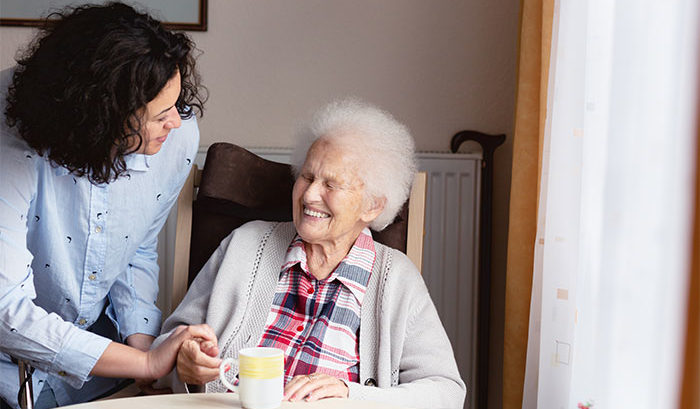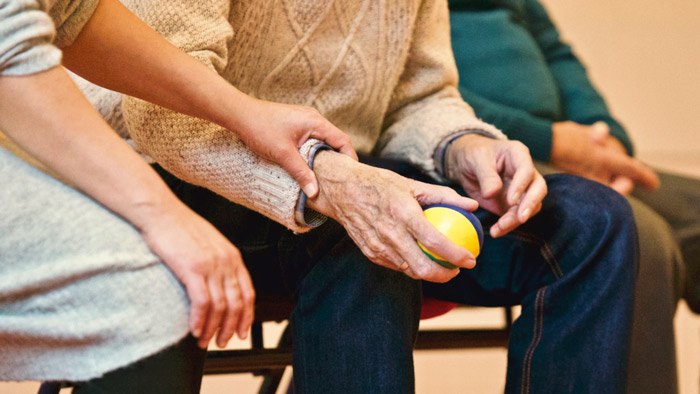Studies show that roughly 70 percent of individuals aged 65 or older will require long-term care at some point.
But determining just when a loved one may need long-term care can be difficult both mentally as well as emotionally. To help make things easier, here are some key factors to look for when determining if your loved one could benefit from long-term care:
- Recent Accidents
Accidents and medical scares are a key indicator that your loved one may need additional help. Falls, fender-benders or car accidents, mismanaging prescriptions can all be scary and stressful for loved ones, caregivers, and everyone involved.
Has your loved one been suffering more falls lately? If you’re not sure, have you noticed them trying to cover or hide bruises and scrapes?
According to the National Council On Aging, “one in every four Americans aged 65+ falls each year.” While it’s easy to trip and fall for anyone regardless of age, to the elderly, it can be especially painful as well as concerning. Unlike younger individuals, the bodies of seniors are increasingly frail and prone to experiencing more cuts, bruising, bone breaks and fractures. When combined with any pre-existing medical conditions and oftentimes the inability to heal as quickly as they once may have, some falls can even prove fatal.
- Increasing Difficulty Managing Daily Activities
 With age, daily activities can be harder to manage. Sometimes referred to as “activities of daily living” or ADLs, these are the daily activities that we often do without thinking— but to an elderly person, these same activities might be more difficult than before. They include:
With age, daily activities can be harder to manage. Sometimes referred to as “activities of daily living” or ADLs, these are the daily activities that we often do without thinking— but to an elderly person, these same activities might be more difficult than before. They include:
- Dressing
- Bathing
- Shopping
- Laundry
- Medication management
- Cleaning
If you suspect your loved one is having increased difficulty with any of these things, or perhaps other daily activities that previously gave them no problem (such as managing finances), expressing your concern is important. When in doubt, consulting with a doctor, or geriatric consultant or expert may be able to offer some suggestions on how to make things easier on your loved one or suggest a functional assessment to determine just where your loved one’s skill level may be at.
- Personal Care and Hygiene
When your usually-put-together loved one starts to look a bit more unkempt, it may be a sign of more just the average “off-day.” As people get older, they may run into more difficulty dealing with, not just the above mentioned daily activities, but also activities relating to their overall hygiene and personal care.
If you’ve noticed your loved one not quite looking like themselves lately it may be worth mentioning it to them to see what they say. Other changes such as sudden weight gain or loss should also be noted as this could be a sign of over or under eating. This may not be complete accidental as your loved one could be forgetting when they last ate.
Changes in body odor could also be a sign of difficulty bathing, depression, or other health problems that may require medical attention and be a sign of a larger problem.
- Signs of Lax Housekeeping
With age can come mobility issues, arthritis, lessening senses of touch, smell, vision, and more. This combined with memory problems can sometimes lead to basic housekeeping issues and may be a sign for a housekeeping to be hired or other long-term care solutions to be explored. Things to look for include:
- Stacks of unopened mail
- Missed bills or payment deadlines
- Thank you letters from charities not previously given to
- Bugs
- Expired food
- Unnecessary multiples of same food items
- Bathroom and kitchen grime: toilet, counters, floors, showers, musty towels
- Wearing the same clothes every time you visit
- Inappropriate clothing with holes, rips, and tears
- Piled up miscellaneous clutter
- Accumulation of takeout or delivery boxes and containers
- Animals That Appear Neglected
Does your loved one have a pet? Studies show that elderly individuals who have a pet have a higher quality of living. According to AgingCare.com, “pets can help reduce stress, lower blood pressure, increase social interaction and physical activity and help them learn” they can also help to reduce depression (something very common in the elderly) and lessen loneliness.
But what happens when it becomes apparent that your loved one’s faithful furry friend isn’t getting quite the attention it needs? Things to look for that may be an indication your loved may be having problems caring for their pet include:
- No food or water
- Potty accidents throughout the house (could be a sign of not going out for walks)
- Matted fur
- Changes in weight (could be an indication of not enough or too little food)
If any of the problems are present, it may be worth looking into having someone come to the house and attend to your loved one’s pet or moving your loved one into a facility that will help them care for their animal.
- Caregiver Burnout
 Caring for an aging loved one can be a difficult task to undertake and there may come a point where you find that you just can’t do it anymore. This is nothing to be ashamed of. Unfortunately, Caregiver Burnout is real and can happen to anyone who is caring for a loved one and who willingly undertakes additional daily stress. Caring for an elderly loved one is an admirable and noble undertaking but it is equally admirable to able to be able to take a step back and admit when you need help or, admit when you can no longer administer the care and attention that your loved one needs on a daily basis.
Caring for an aging loved one can be a difficult task to undertake and there may come a point where you find that you just can’t do it anymore. This is nothing to be ashamed of. Unfortunately, Caregiver Burnout is real and can happen to anyone who is caring for a loved one and who willingly undertakes additional daily stress. Caring for an elderly loved one is an admirable and noble undertaking but it is equally admirable to able to be able to take a step back and admit when you need help or, admit when you can no longer administer the care and attention that your loved one needs on a daily basis.
If you find yourself experiencing any of the following signs or symptoms, it may be time to look into other Long-Term Care options:
- Withdrawal from friends and family
- Loss of interest in activities previously enjoyed
- Feeling blue, irritable, hopeless, and helpless
- Changes in appetite, weight, or both
- Changes in sleep patterns
- Getting sick more often
- Feelings of wanting to hurt yourself or the person for whom you are caring
- Emotional and physical exhaustion
- Excessive use of alcohol and/or sleep medications
- Escalating Care Needs
Similar to the above point, there may come a point where you can no longer provide the necessary medical attention that your loved one may require. The progression of chronic or pre-existing health problems, a slow recovery from a previous illness or injury, as well as a sudden onset or worsening of a condition, may also be signs that your loved one may need increased medical assistance.
In cases such as these, it may be worth looking into having a nurse come and check on your loved one periodically or a more drastic measure (depending upon the severity of the condition) may be to move your loved one into a nursing or assisted living facility for long-term care.
Planning For The Future
According to an article from Forbes, “A private room in a nursing home now costs consumers more than $8,000 per month, or $97,455 per year, according to the report, which provides national median figures. That’s an increase of 5.5 from just one year ago and a nearly 50% increase since 2004. A semi-private room is less expensive, but still carries a hefty price tag: $85,775 per year.”
Assisted living facilities are more affordable but the national average for a private room will still run approximately $45k a year— which is actually proving to be more affordable than in-home health aids ($49,192) and standard homemaker-type services (47,934), according to the Genworth 2017 Cost of Care Study.
With the yearly cost of Long-Term Care only continuing to rise, Long-Term Care insurance can help both you and your family cover the cost of your care should you need it in the future.
To learn more about what Long-Term Care Insurance can do for you, please visit www.fcachiro.memberbenefits.com/long-term-care/ for more information.
To find an aging life care expert in your area, please visit www.aginglifecare.org.












